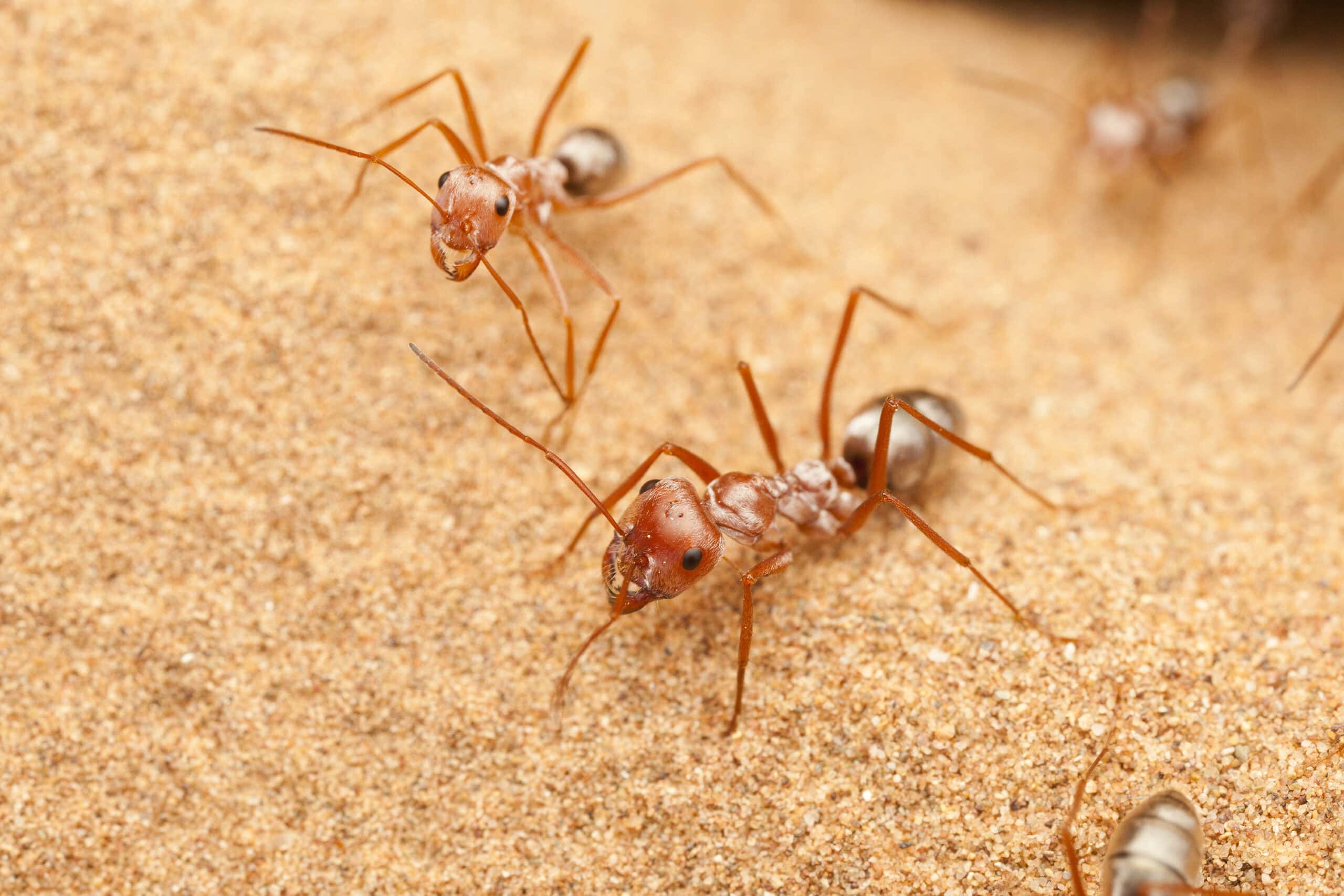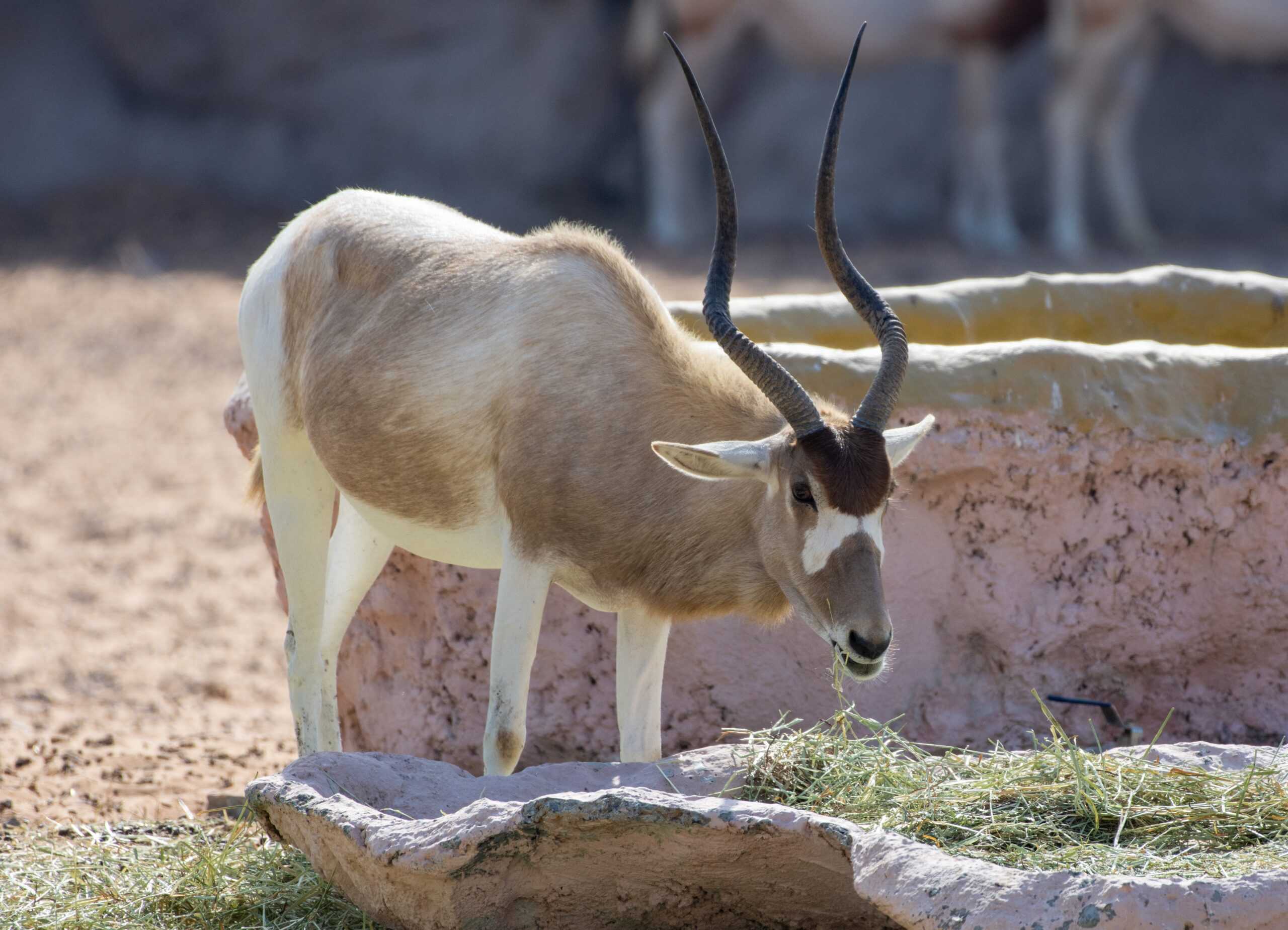Deserts, often perceived as barren wastelands, are home to a surprising array of rare and fascinating animals uniquely adapted to survive in extreme conditions. From the swift Saharan Silver Ant to the elusive Arabian Leopard, these creatures have evolved remarkable traits that enable them to thrive in harsh environments. This article delves into some of the rarest desert animals, highlighting their distinctive characteristics and the challenges they face, showcasing the incredible diversity of life that flourishes in some of the most unforgiving places on Earth.
Saharan Silver Ant (Cataglyphis bombycina)
The Saharan Silver Ant, found exclusively in the Sahara Desert, is renowned for its remarkable speed and reflective silver hair that protects it from the intense desert heat. These ants are adapted to forage during the hottest part of the day, a time when their predators are inactive. Their unique physiology allows them to endure temperatures up to 53.6°C (128.5°F), making them one of the most heat-tolerant terrestrial animals on Earth. Due to their specialized habitat and extreme living conditions, they are considered one of the rarest desert insects.
Sand Cat (Felis margarita)
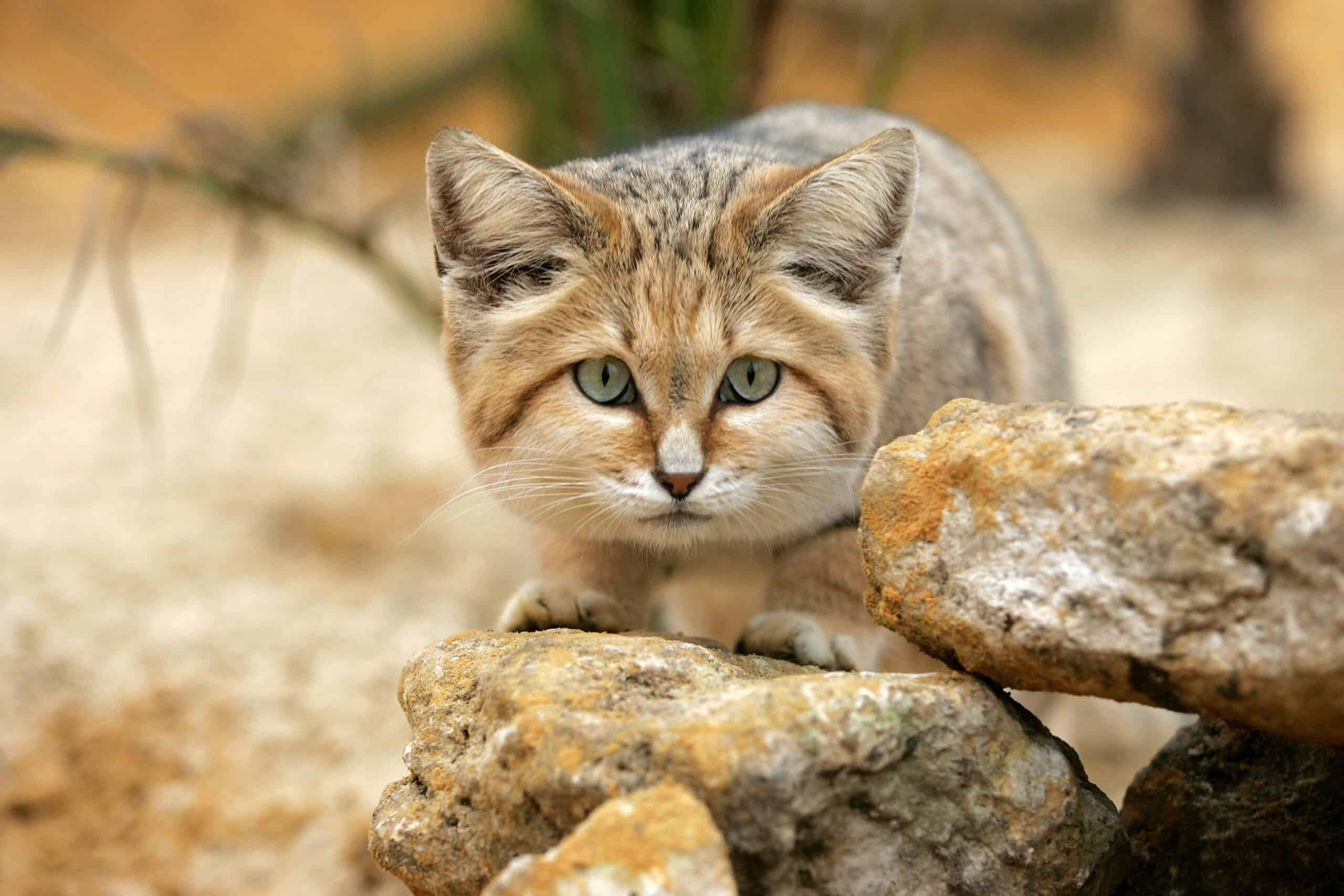
The elusive Sand Cat is perfectly adapted to life in the deserts of North Africa and the Middle East. With its sand-colored fur providing excellent camouflage, this small feline can survive extreme temperatures and requires minimal water. Their large ears aid in detecting prey and dissipating heat, while their furry paws enable them to walk on hot sand without discomfort. Sand Cats are rare due to their solitary nature and the vast, sparse habitats they roam.
Addax (Addax nasomaculatus)
The Addax, or white antelope, is a critically endangered species native to the Sahara Desert. Recognizable by its long, twisted horns and light-colored coat, the Addax has adapted to extreme desert conditions by surviving on a diet of dry grasses and leaves. It rarely drinks water, obtaining moisture from the plants it consumes. Habitat loss and hunting have drastically reduced their numbers, making sightings increasingly rare.
Arabian Oryx (Oryx leucoryx)
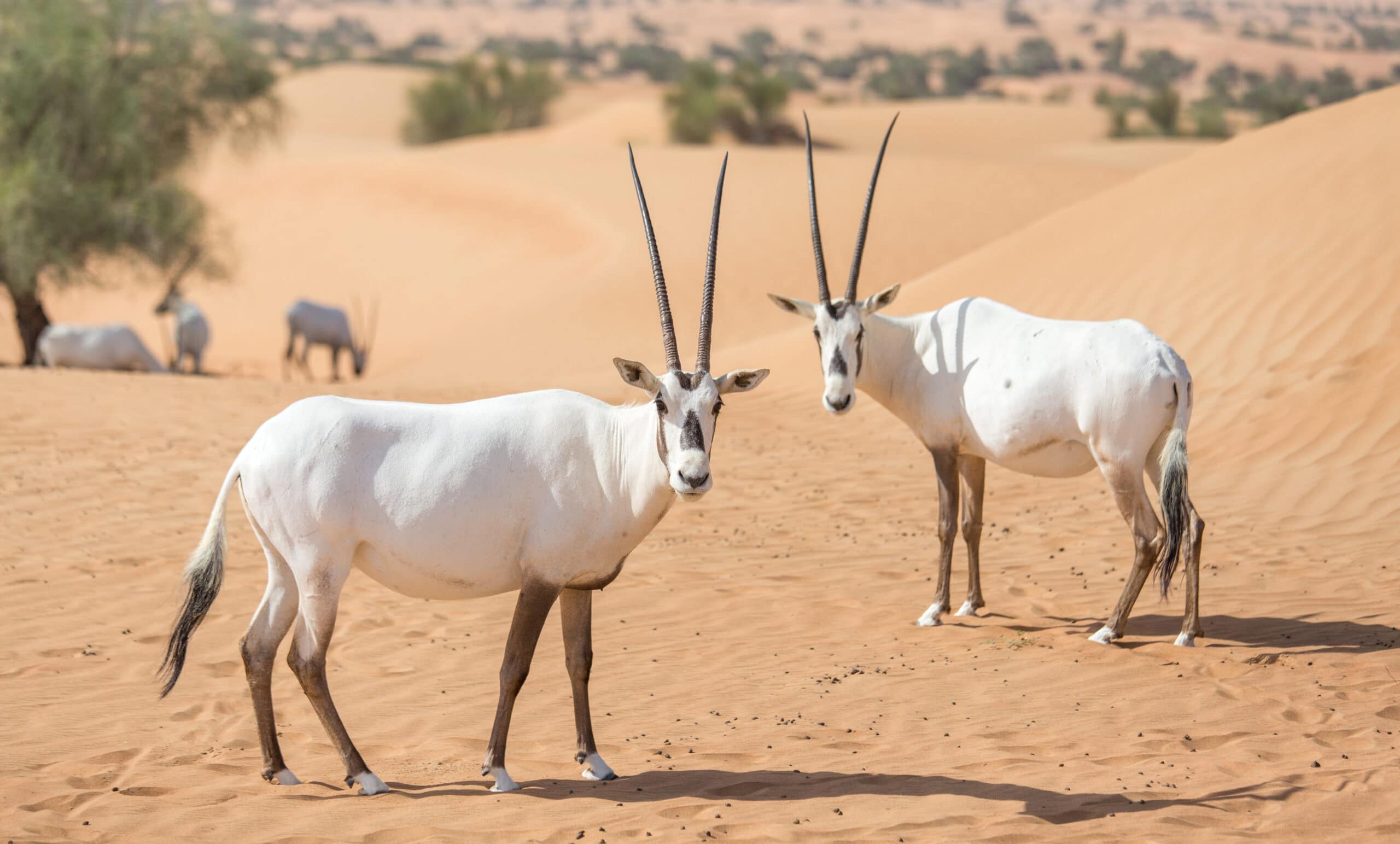
Once on the brink of extinction, the Arabian Oryx is a symbol of successful conservation efforts. This majestic antelope, with its striking white coat and long, straight horns, roams the deserts of the Arabian Peninsula. Adapted to survive without water for extended periods, it feeds on tough desert vegetation. Although reintroduced into the wild, the Arabian Oryx remains one of the rarest desert mammals due to ongoing threats from habitat destruction and poaching.
Desert Tortoise (Gopherus agassizii)
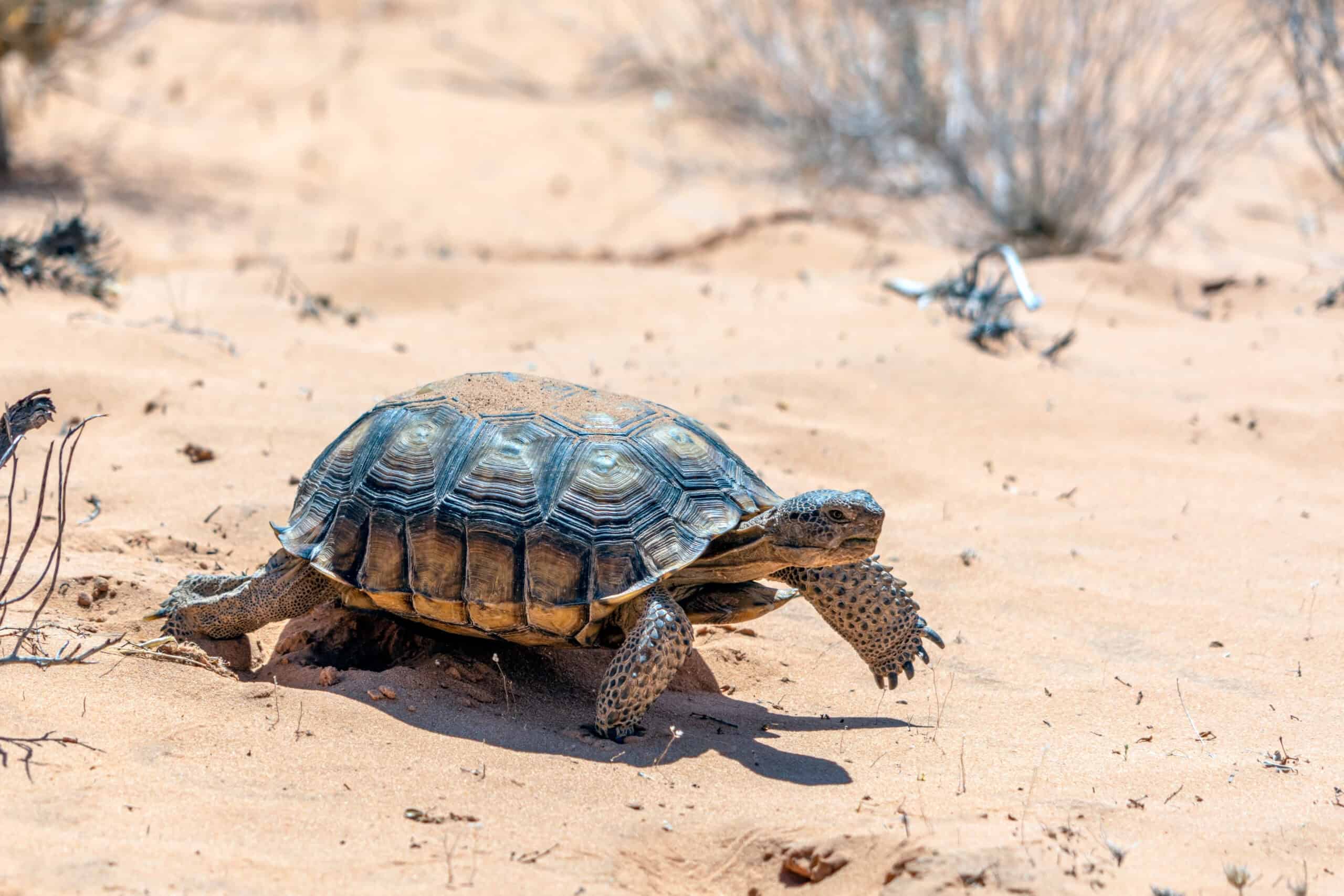
The Desert Tortoise inhabits the arid regions of the southwestern United States and northern Mexico. These tortoises spend much of their lives in burrows to escape the extreme heat and conserve moisture. Their slow reproductive rate and long lifespan make them vulnerable to threats such as habitat destruction, predation, and disease. Conservation efforts are crucial for their survival, as their populations continue to decline.
Fennec Fox (Vulpes zerda)

The Fennec Fox, with its oversized ears and small stature, is perfectly adapted to the deserts of North Africa and the Sinai Peninsula. These nocturnal animals use their large ears to dissipate heat and locate prey underground. Their cream-colored fur reflects sunlight, while their thick fur on the soles of their feet protects them from hot sand. Although relatively stable in the wild, they are rare due to their elusive nature and the specific conditions of their habitat.
Gobi Bear (Ursus arctos gobiensis)
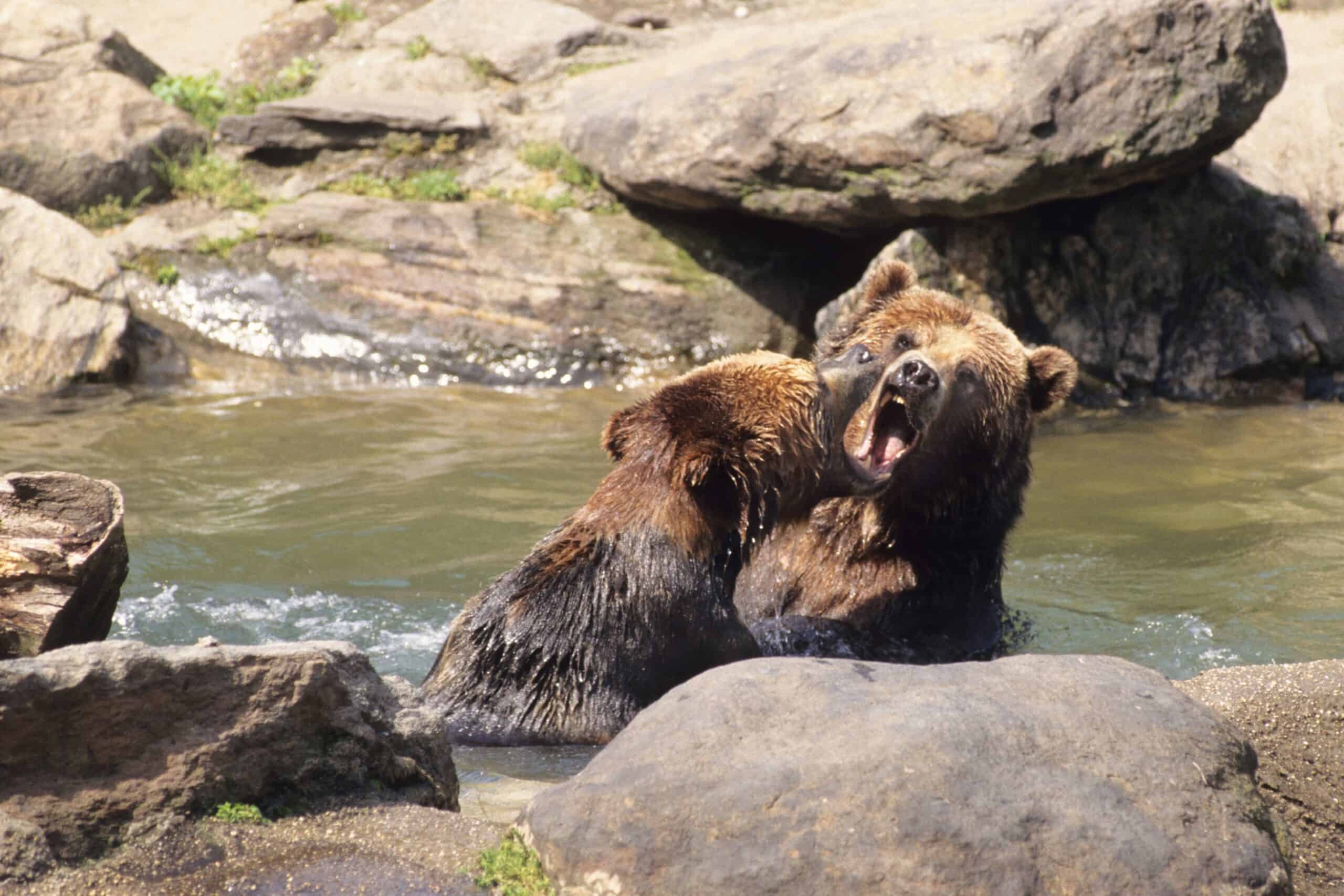
The Gobi Bear, a subspecies of the brown bear, is one of the rarest bears in the world, confined to the Gobi Desert in Mongolia. With an estimated population of fewer than 50 individuals, this bear has adapted to the harsh desert environment, surviving on a diet of roots, plants, and small mammals. Their rarity is attributed to the extreme conditions of their habitat and limited food sources, making conservation efforts vital.
Namib Desert Beetle (Stenocara gracilipes)
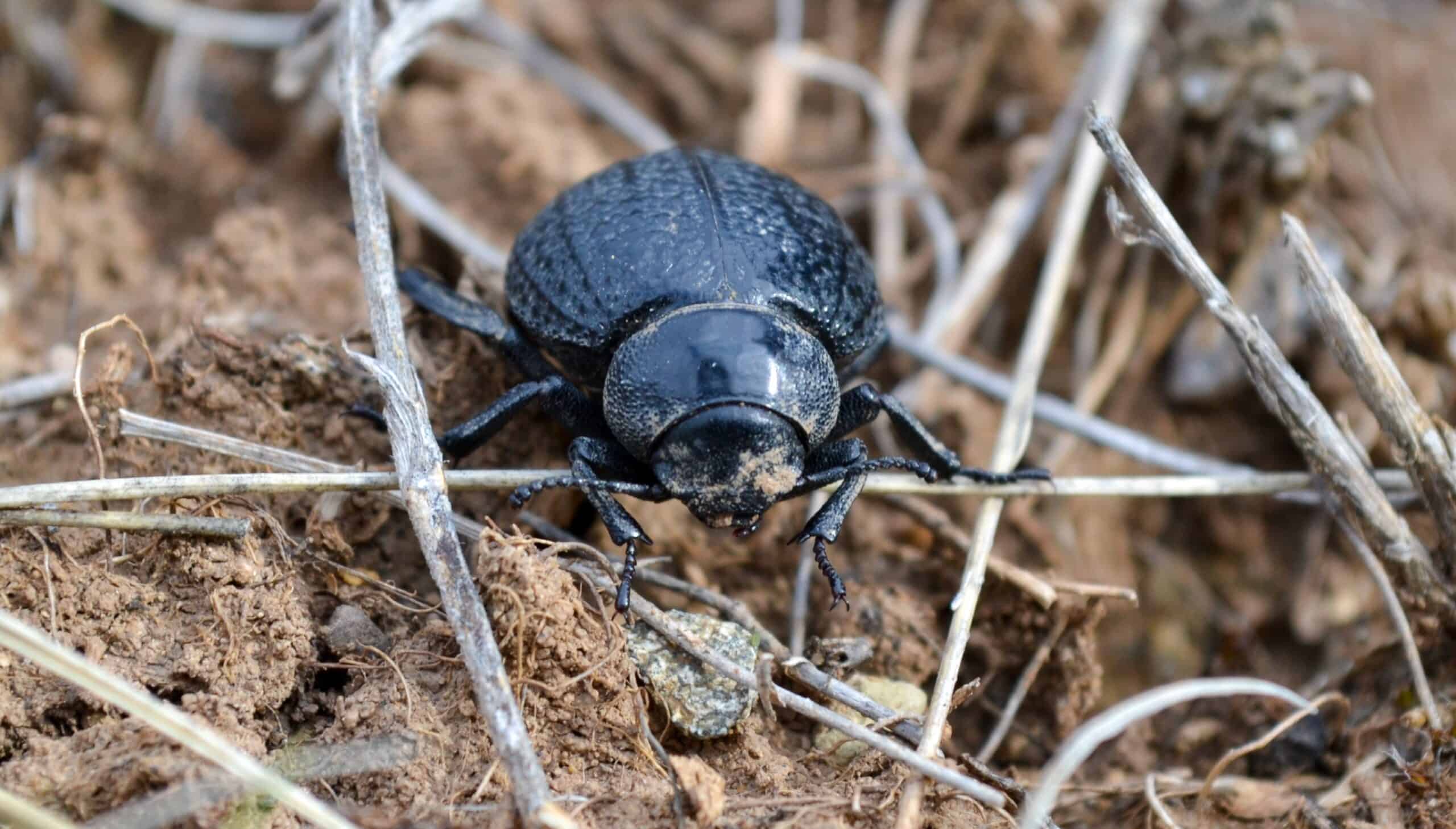
The Namib Desert Beetle has a unique adaptation for surviving in one of the driest places on Earth. This beetle collects water by facing into the wind and allowing fog to condense on its specially structured back. The droplets then roll down into its mouth. Found exclusively in the Namib Desert, this beetle is rare due to its highly specialized habitat and unique water collection method.
Desert Horned Viper (Cerastes cerastes)
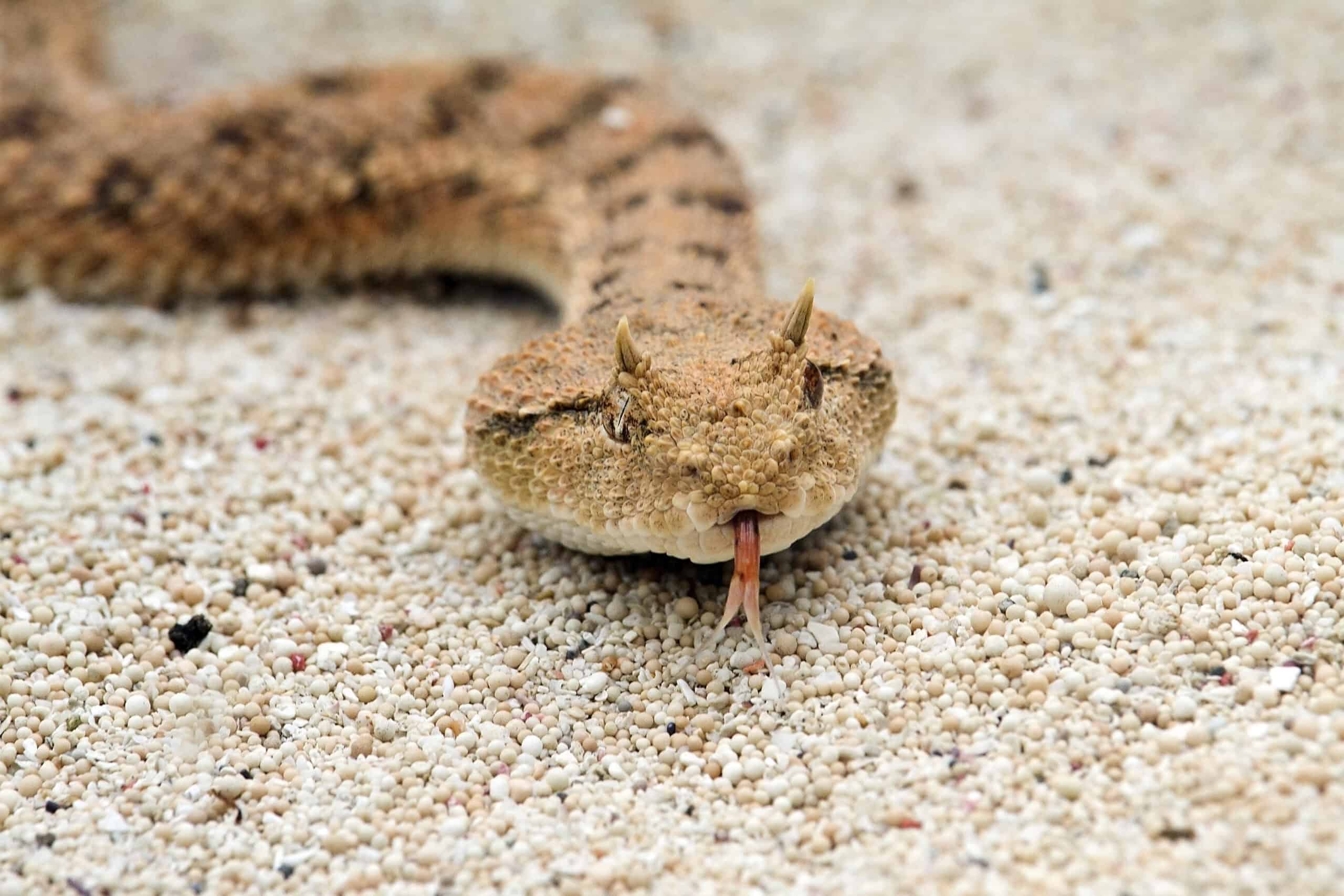
The Desert Horned Viper, with its distinctive horn-like scales above its eyes, inhabits the sandy deserts of North Africa and the Middle East. This snake is an ambush predator, burying itself in the sand to strike at unsuspecting prey. Its ability to withstand extreme temperatures and conserve water makes it a true desert survivor. However, its specific habitat requirements and threats from human activity make it a rare and vulnerable species.
Arabian Sand Gazelle (Gazella marica)
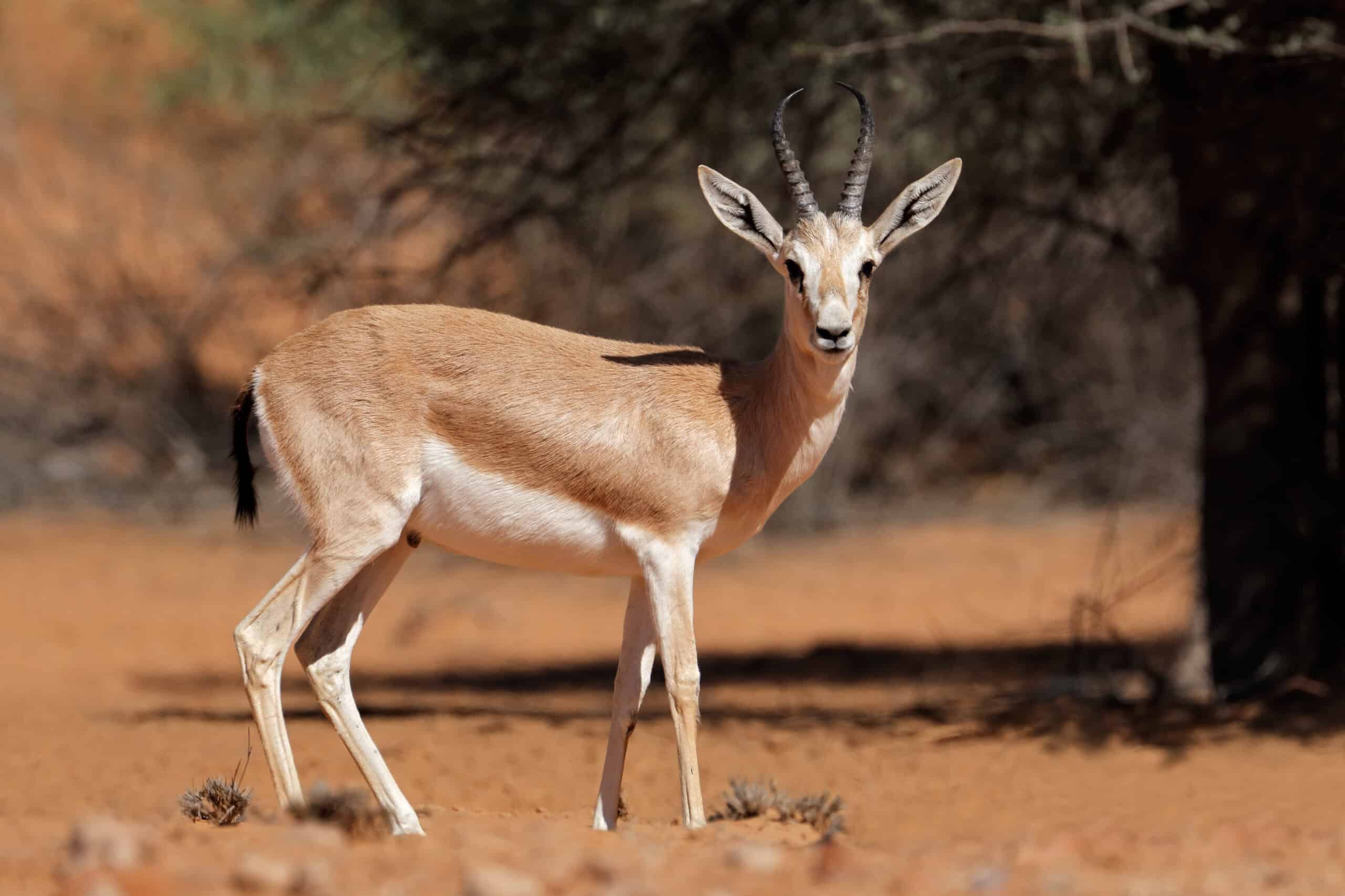
The Arabian Sand Gazelle, or Reem, is adapted to the arid deserts of the Arabian Peninsula. With its slender body and pale coat, this gazelle can withstand high temperatures and survive on minimal water. Its numbers have drastically declined due to habitat loss, hunting, and competition with livestock. Conservation programs are essential to protect this rare desert species from extinction.
Jerboa (Various species in Dipodidae family)

Jerboas are small, hopping rodents found in the deserts of North Africa and Asia. Known for their long hind legs and tail, these nocturnal creatures can leap great distances to escape predators. Their burrowing habits help them avoid extreme temperatures. Jerboas are rare due to their specific habitat needs and threats from habitat destruction and predation.
Namib Golden Mole (Eremitalpa granti namibensis)
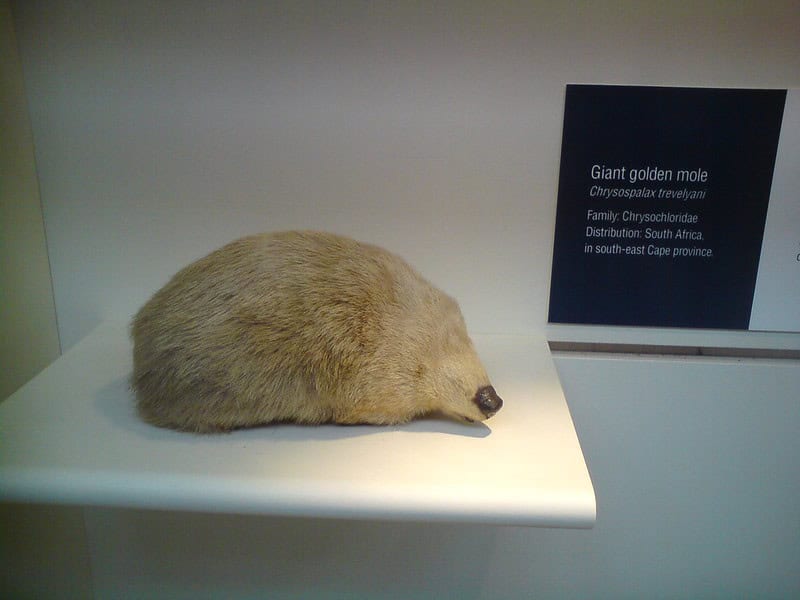
The Namib Golden Mole is a subterranean mammal native to the Namib Desert. This tiny, blind mole has adapted to a life of burrowing through sand, hunting insects and other invertebrates. Its rarity stems from its restricted range and specialized habitat, making it vulnerable to environmental changes and human activities.
Thorny Devil (Moloch horridus)
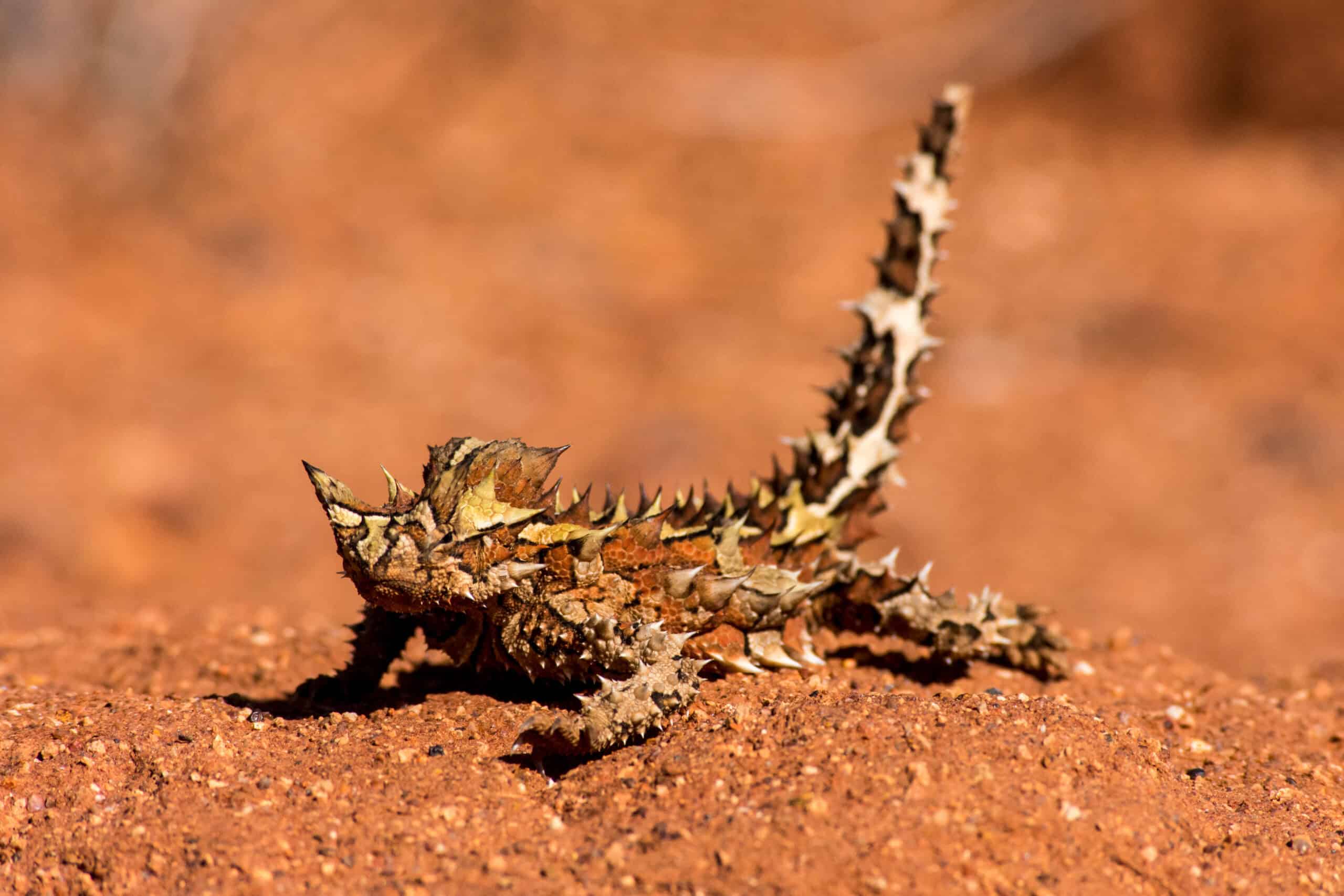
The Thorny Devil, found in the deserts of Australia, is a unique lizard covered in spiny scales. These spikes help it to collect dew and channel water directly to its mouth. Its camouflaged appearance and ability to inflate its body to deter predators are remarkable adaptations. Despite its resilience, the Thorny Devil is rare due to habitat destruction and climate change.
Cuvier’s Gazelle (Gazella cuvieri)
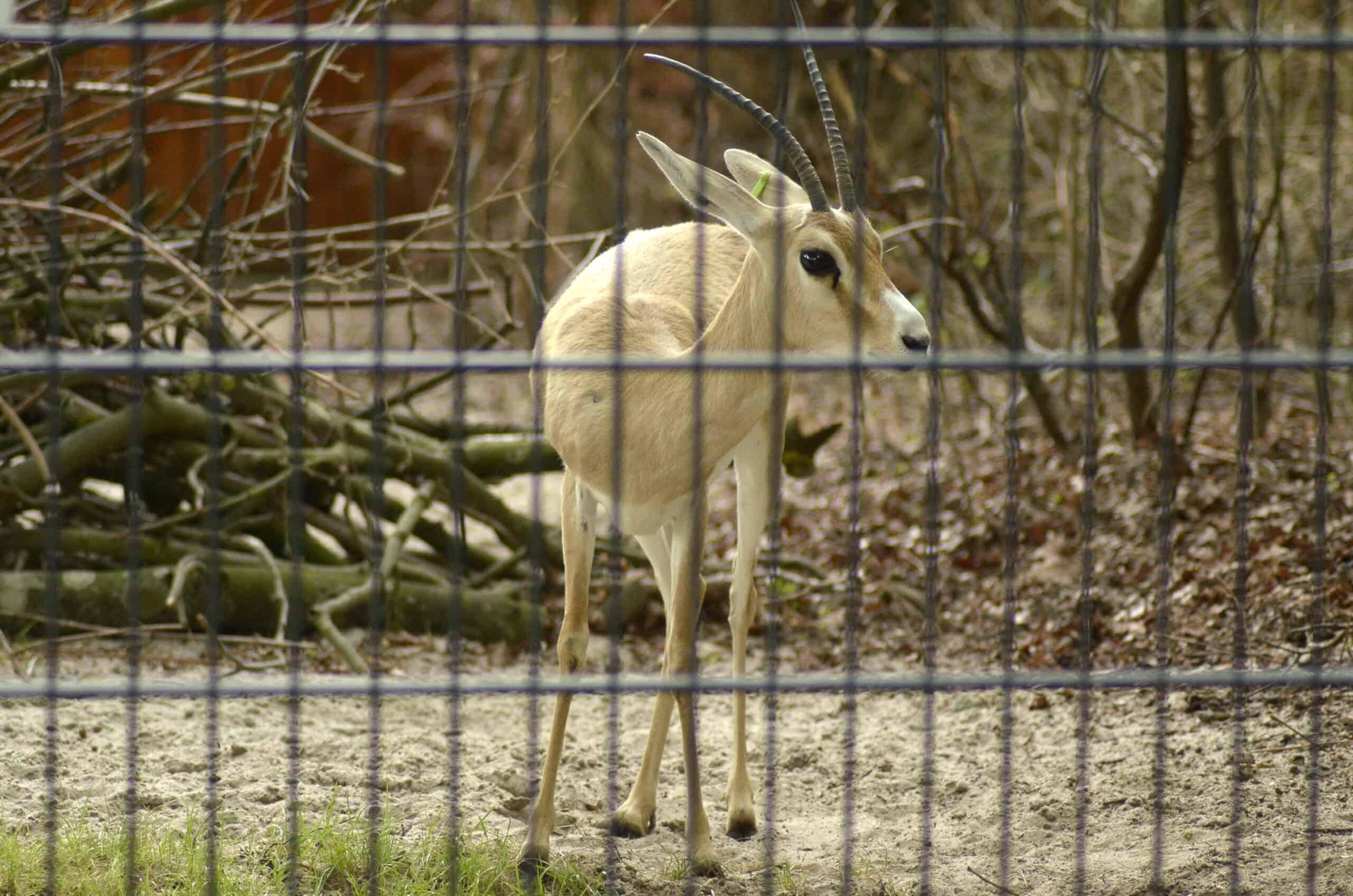
Cuvier’s Gazelle is native to the mountainous and desert regions of North Africa. Recognizable by its slender build and elegant horns, this gazelle is adapted to harsh, arid environments. Its population has dwindled due to overhunting, habitat loss, and competition with domestic livestock. Conservation efforts are critical to preserve this rare and beautiful species.
Desert Lark (Ammomanes deserti)
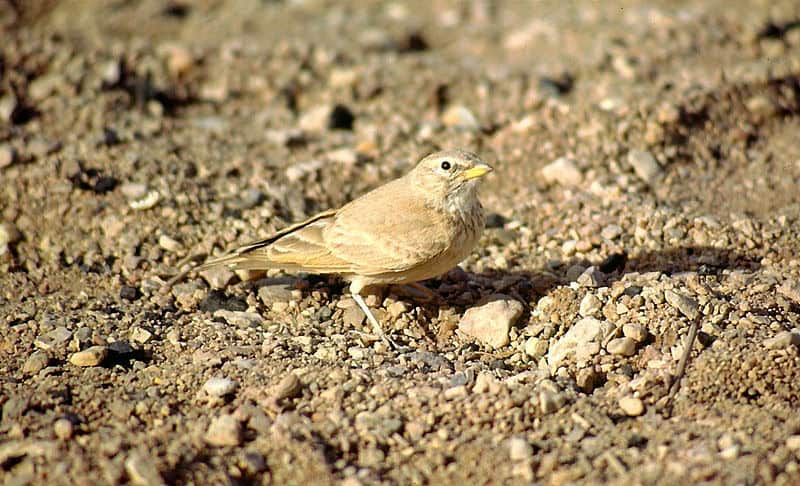
The Desert Lark is a small bird found in the deserts of the Middle East and North Africa. Its sandy plumage provides excellent camouflage against the desert backdrop. This bird is adapted to extreme temperatures and arid conditions, feeding on seeds and insects. Habitat degradation and climate change have made the Desert Lark increasingly rare, highlighting the need for habitat protection.
Dugong (Dugong dugon)

While not exclusive to deserts, Dugongs are rare marine mammals found in warm coastal waters, including those of the Red Sea. These gentle giants feed on seagrass and are adapted to life in shallow waters. Dugongs are threatened by habitat loss, entanglement in fishing gear, and hunting, making them one of the rarest marine mammals.
Arabian Leopard (Panthera pardus nimr)

The Arabian Leopard, one of the smallest leopard subspecies, inhabits the mountainous and desert regions of the Arabian Peninsula. This critically endangered feline has adapted to arid environments but faces severe threats from habitat loss and hunting. With fewer than 200 individuals remaining, the Arabian Leopard is one of the rarest big cats in the world.
Desert Rain Frog (Breviceps macrops)
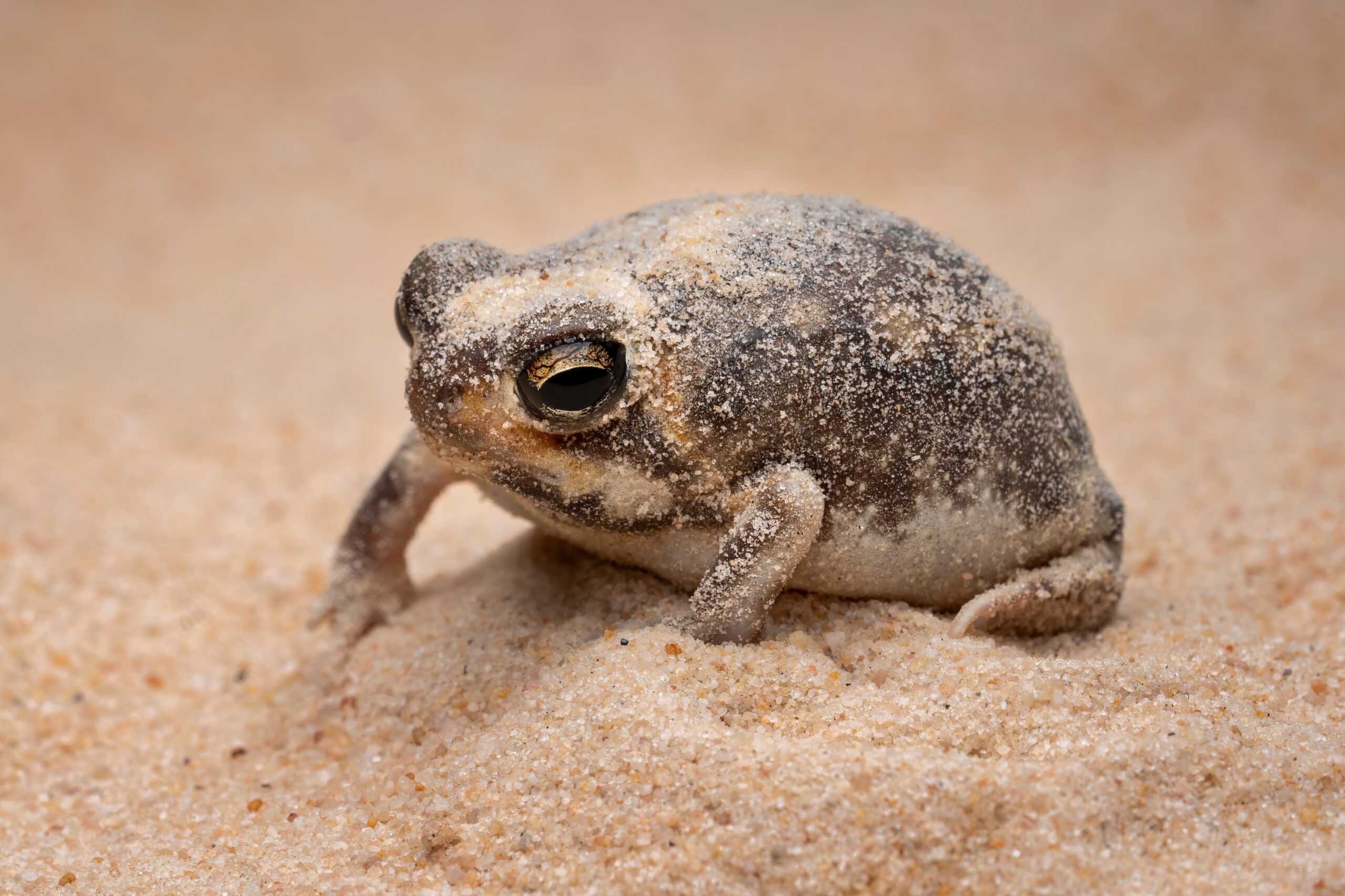
The Desert Rain Frog, found in the coastal deserts of Namibia and South Africa, is known for its distinctive squeaky call and round, bulging eyes. This small amphibian is adapted to survive in sandy environments, where it burrows to retain moisture. Its limited distribution and the threat of habitat destruction make it a rare and vulnerable species.
Golden Jackal (Canis aureus)
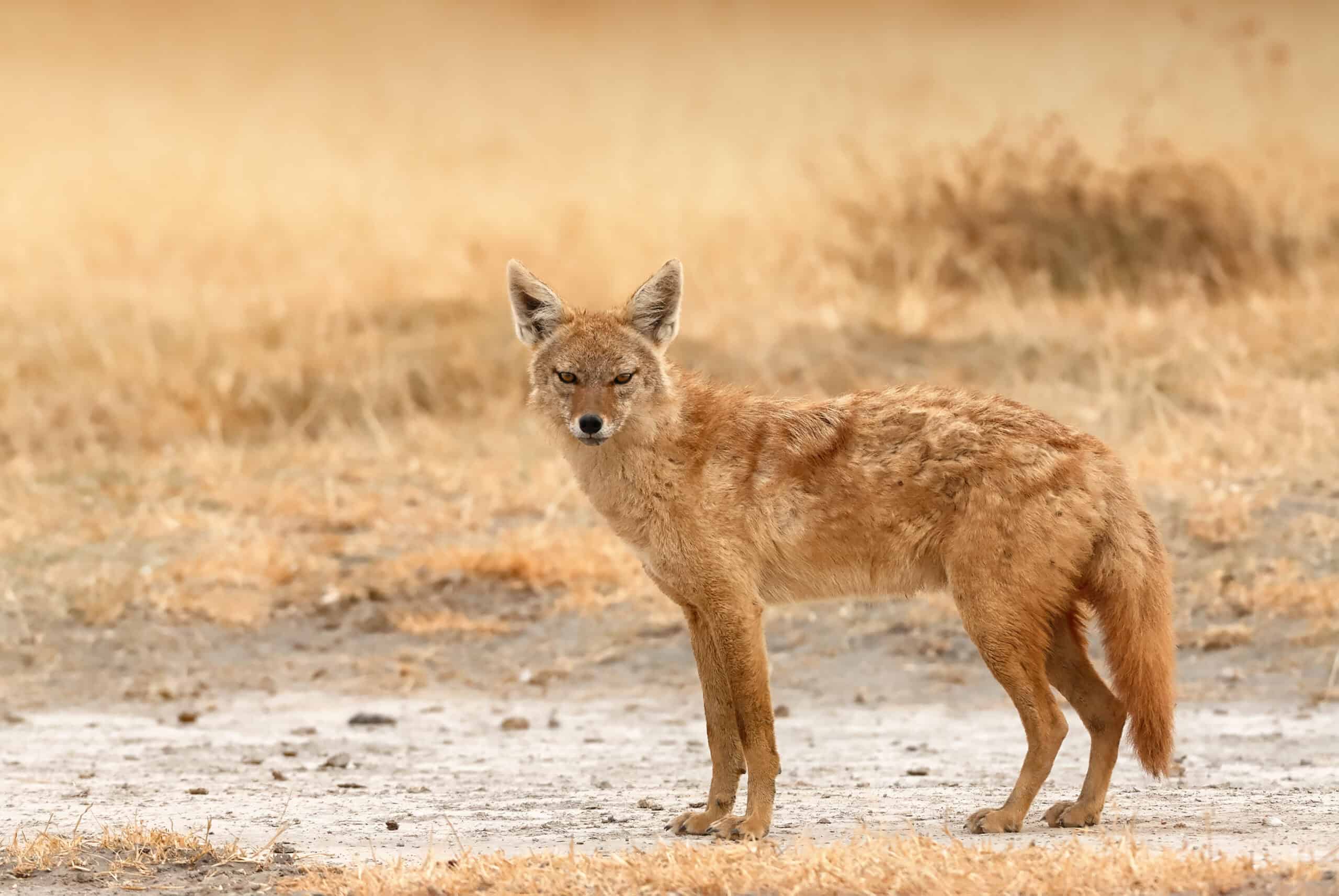
The Golden Jackal, found in the deserts and arid regions of North Africa and Asia, is a versatile predator and scavenger. Adapted to a wide range of environments, including deserts, it has a varied diet that includes small mammals, birds, and plant material. While not endangered globally, populations in certain desert regions are rare due to habitat encroachment and hunting.
Cape Hare (Lepus capensis)
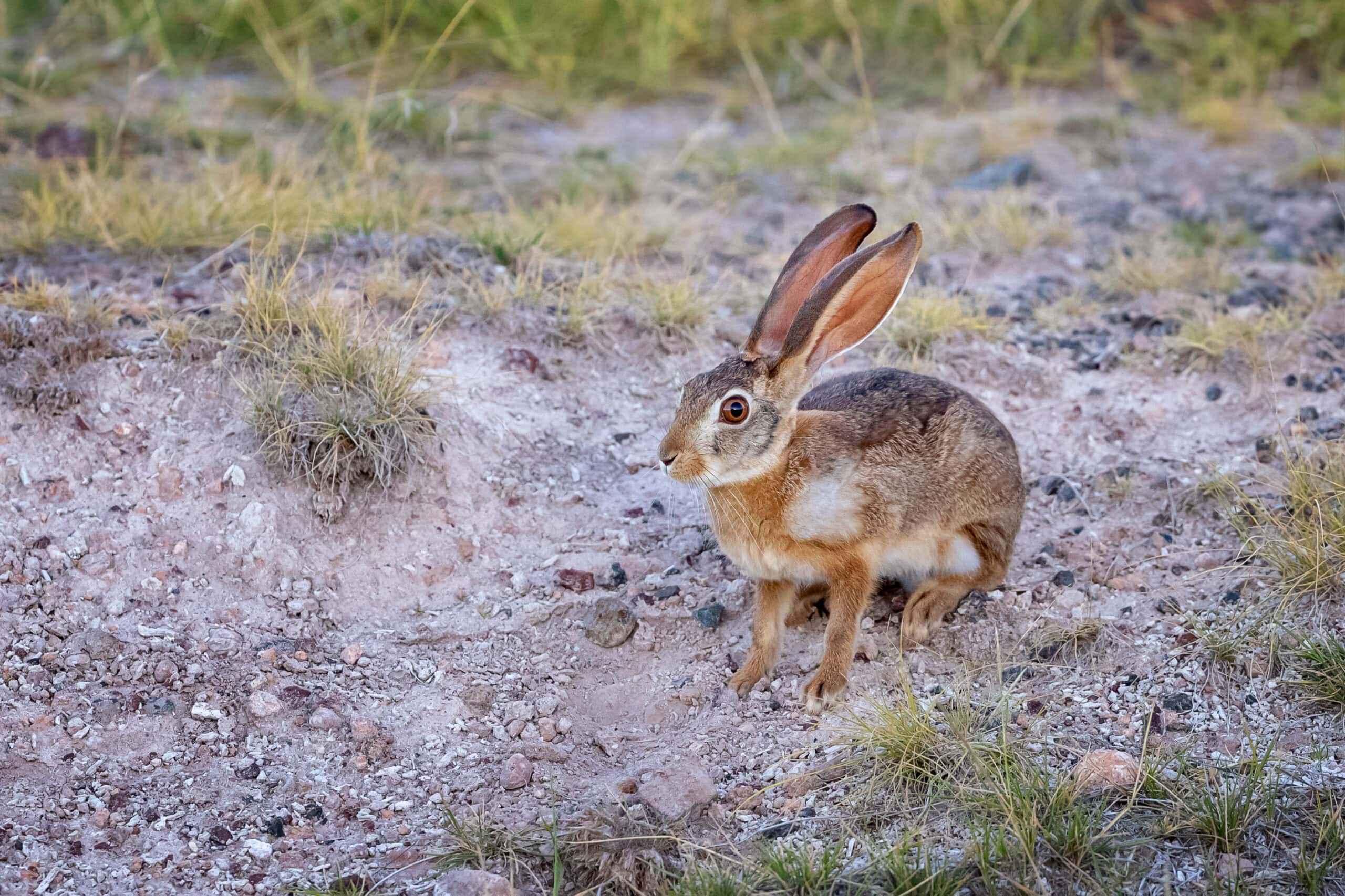
The Cape Hare is a widespread species found in the deserts and grasslands of Africa and parts of the Middle East. Known for its long ears and powerful hind legs, this hare is adapted to hot, arid environments. Despite its wide range, certain populations are rare due to habitat loss and hunting pressures.
This article originally appeared on Rarest.org.
More From Rarest.Org
When it comes to the world of luxury pets, some cat breeds stand out not just for their beauty and unique traits but also for their hefty price tags. These breeds, often rare and highly sought-after, can command prices that reflect their exclusivity and pedigree. Read more.
Television has gifted us countless iconic moments, often defined by the memorable props that become synonymous with the shows themselves. These items, ranging from vehicles and furniture to costumes and unique artifacts, hold a special place in the hearts of fans. Read more.
Throughout history, numerous manuscripts have survived the test of time, each offering a unique glimpse into the past. These rare documents are more than just ancient texts; they are treasures that illuminate the knowledge, beliefs, and artistry of their eras. Read more.

